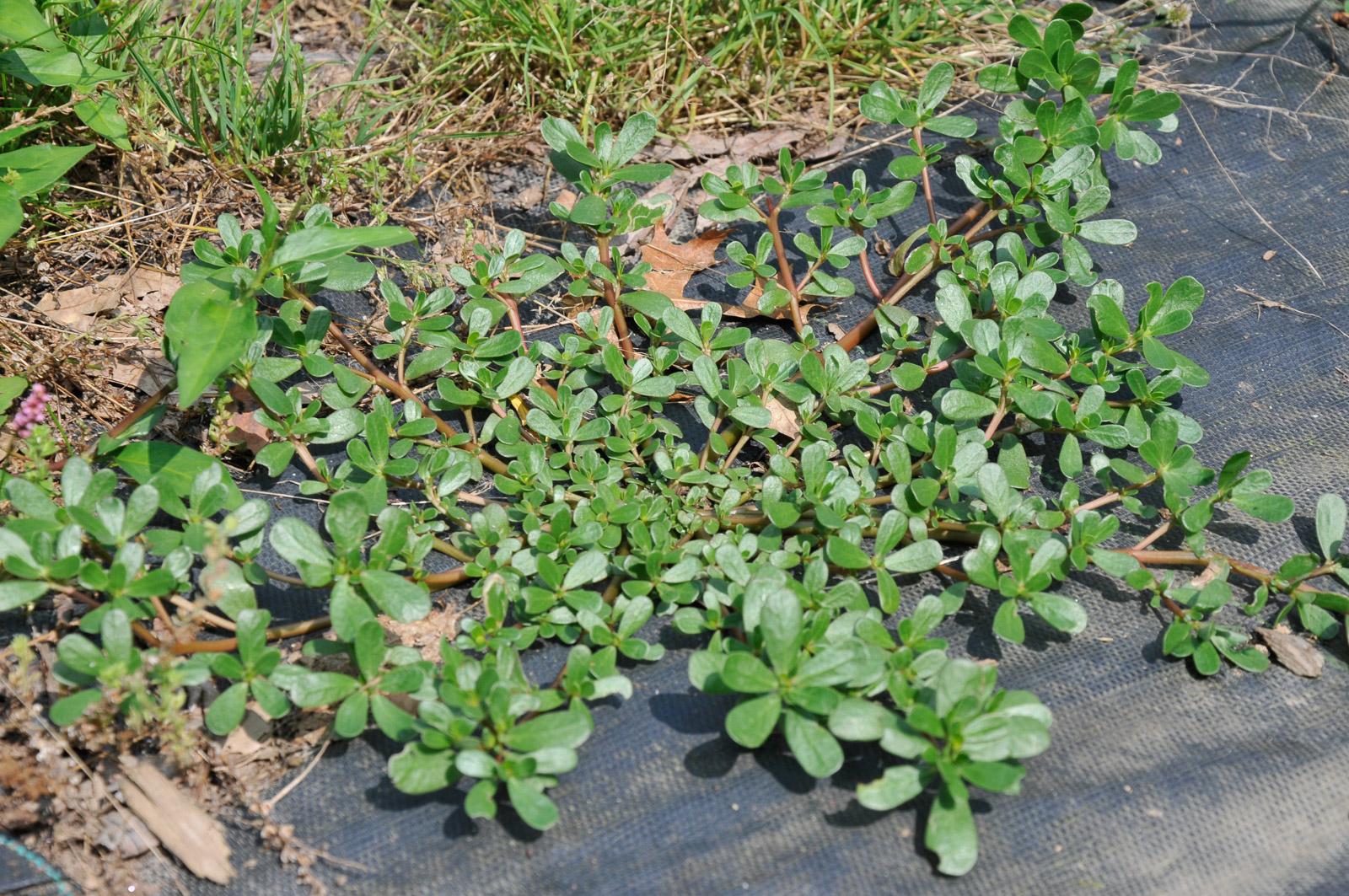Life cycle
Summer annual.
Growth habit
Prostrate growth habit, forming low mats less than 1 ft. tall; stems and leaves thick, succulent, light green to maroon on undersides and older portions.
Reproduction
Reproduces by seed; flowers yellow, 5 petals at tips of stems; seeds germinate late May through early August.

Photo: Ohio State Weed Lab , The Ohio State University, Bugwood.org
Conditions that favor growth
Weed of landscapes and newly seeded turf, vegetable, fruit, and agronomic crops as well as home landscapes; thrives in crevices between bricks and cracked cement, sandy, nutrient-poor, compacted soils, and drought; high light and warm growing conditions.
Management In Lawns
Lawn care practices
Maintain healthy, dense turf that can compete and prevent weed establishment.
Mechanical management
Hand pulling or using an appropriate weeding tool are the primary means of mechanical weed control in lawns. This is a viable option at the beginning of an infestation and on young weeds. Hand pulling when the soil is moist makes the task easier.
Manage Weeds Without Chemicals
Chemical treatment in lawns
If you choose this option, spot treat weeds with a liquid, selective, postemergent, broadleaf weed killer applied when weeds are actively growing. Look for a product with one or more of the following active ingredients:
2, 4-D, MCPP (mecoprop), Dicamba*, or Triclopyr.
*Do not spray herbicides containing dicamba over the root zone of trees and shrubs. Roots can absorb the product possibly causing plant damage. Refer to the product label for precautions.
